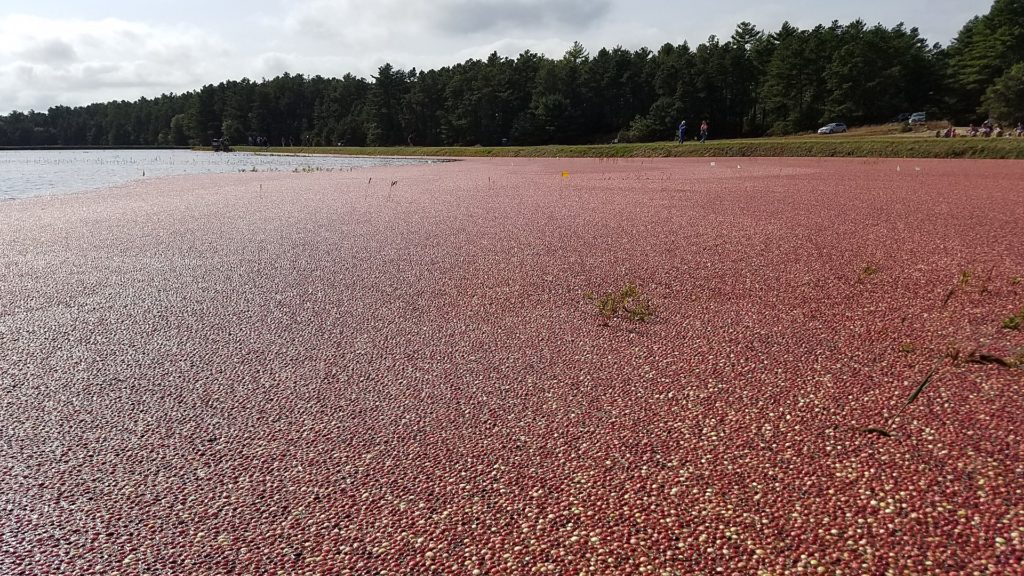Note: This piece was co-written between me and Joe Legault.
‘Tis the season for all things cranberry, from cranberry sauce and chutney to pie and warm cran-apple crisp. Although this bright red berry is a bit tart by itself, it can be a flavorful addition to many side dishes and desserts.
But have you ever wondered where this versatile fruit comes from? Unlike the other big name berries like strawberries, blueberries, and raspberries, cranberries actually grow in bogs, and right here in the Northeast, Cape Cod played a key role in the development of cranberry farming. To celebrate National Eat a Cranberry Day, let’s dive a little deeper into the history of America’s original superfruit on The Cape!
How the Cranberry Bogs Formed on Cape Cod
Many thousands of years ago, glaciers breaking apart from one another carved out cavities that evolved into cranberry bogs on Cape Cod. Kettle ponds, or kettle holes (basically small ponds), formed in conjunction with organic elements like sand and clay and provided the ideal environment for cranberries.
Wild cranberries grow on long vines and in tight clusters throughout sandy bogs and marshes. As early as the 16th century, Native Americans in southeastern Massachusetts harvested wild cranberries and used them for medicines and food, including a unique mixture called pemmican (a mix of cranberries, dried meat, and melted animal fat) that could last for months.
The Evolution of the Cape Cod Cranberry Industry
When Europeans came over to North America and started settling near Cape Cod, they were not surprised to discover these cranberries because they had seen a similar version of the fruit back in southern England.
In 1816 in Dennis, MA, Revolutionary War veteran Henry Hall became the first to start cultivating cranberries after he noticed the fruit grew better with sand on them. Hall transplanted his cranberry vines to boggy areas where he could spread sand and then await a successful harvest season.
Others soon copied Hall’s technique, and the cranberry cultivation industry took off. Landowners began converting their swamps and wetlands into cranberry bogs. The amount of acres of cranberry bogs under cultivation tripled on Cape Cod from 1885 to 1900.
A Revolutionary New Harvesting Method
As with other types of farming and food cultivation, the cranberry business was hard work. The cranberries were initially handpicked before scoops and sorters came on the scene. This is referred to as dry harvesting.
To make cranberry harvesting quicker and more efficient, farmers sought to develop new techniques. In the 20th century, a revolutionary method called wet harvesting was created. Cranberries naturally have pockets of air inside of them, so wet harvesting involves flooding cranberry bogs during the harvest season and allowing the berries to float to the surface where they can be easily collected.
If you ever wondered why those cranberry juice commercials show farmers standing waist-deep in a sea of cranberries, now you know!
The Cranberry Industry Today
Surprisingly Massachusetts is not the number one state for cranberry production. Wisconsin is the top producer of cranberries in the world, while Massachusetts is the country’s second largest cranberry producer.
However, just like how Georgia isn’t number one in peaches, they still own that fruit – the cranberry belongs to The Cape.
Check out a delicious cranberry muffin recipe >>
Sources:
- Cranberries.org: The Cranberry: Where Tradition Meets Innovation
- FairlandFarm.net: Harvesting Cranberries
- Oceanspray.com.au: Cranberry History
- SmithsonianMag.com: A Brief History of Cranberries
- USCranberries.com: About Cranberries
- VacationCapeCod.com: Cape Cod and Cranberries
